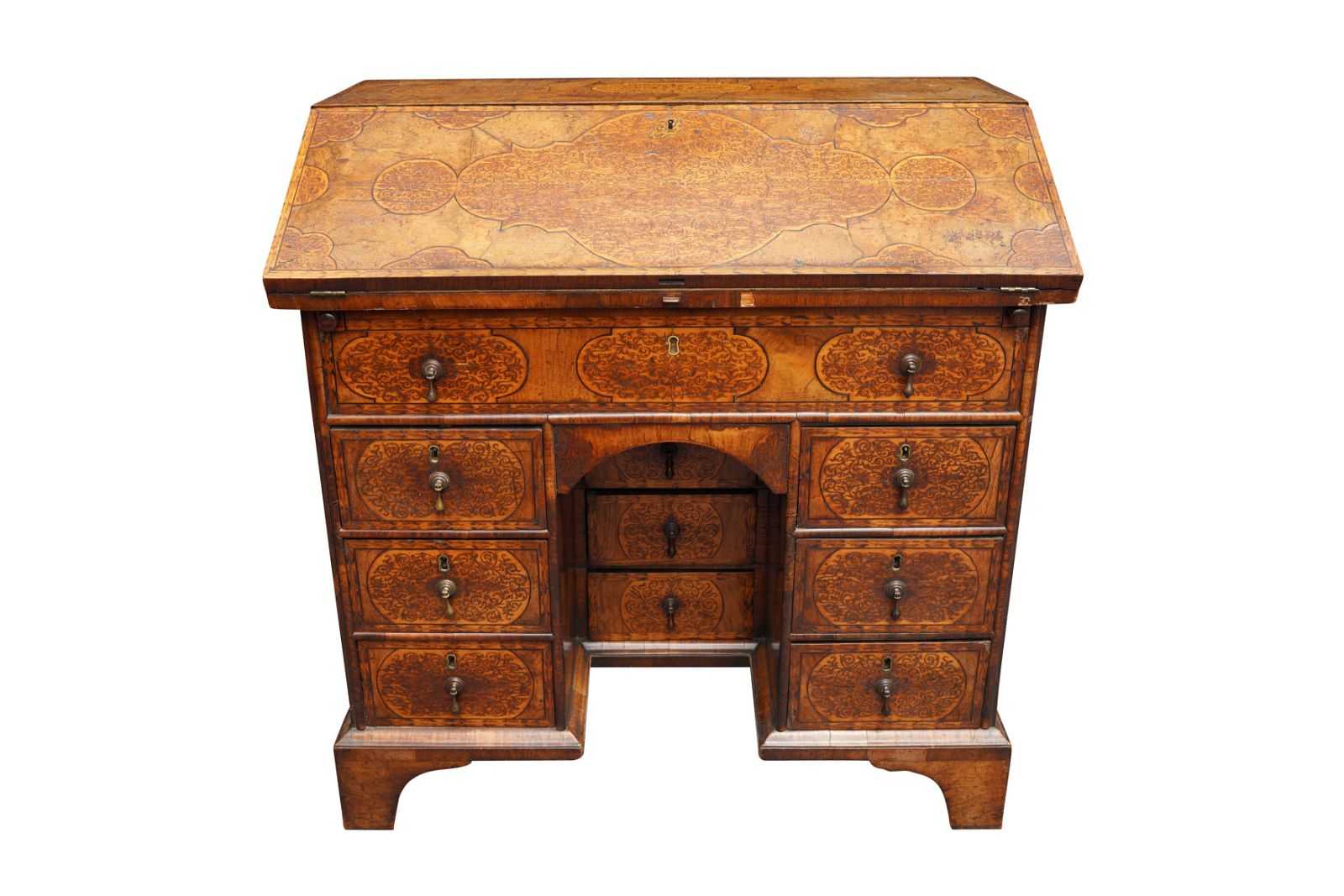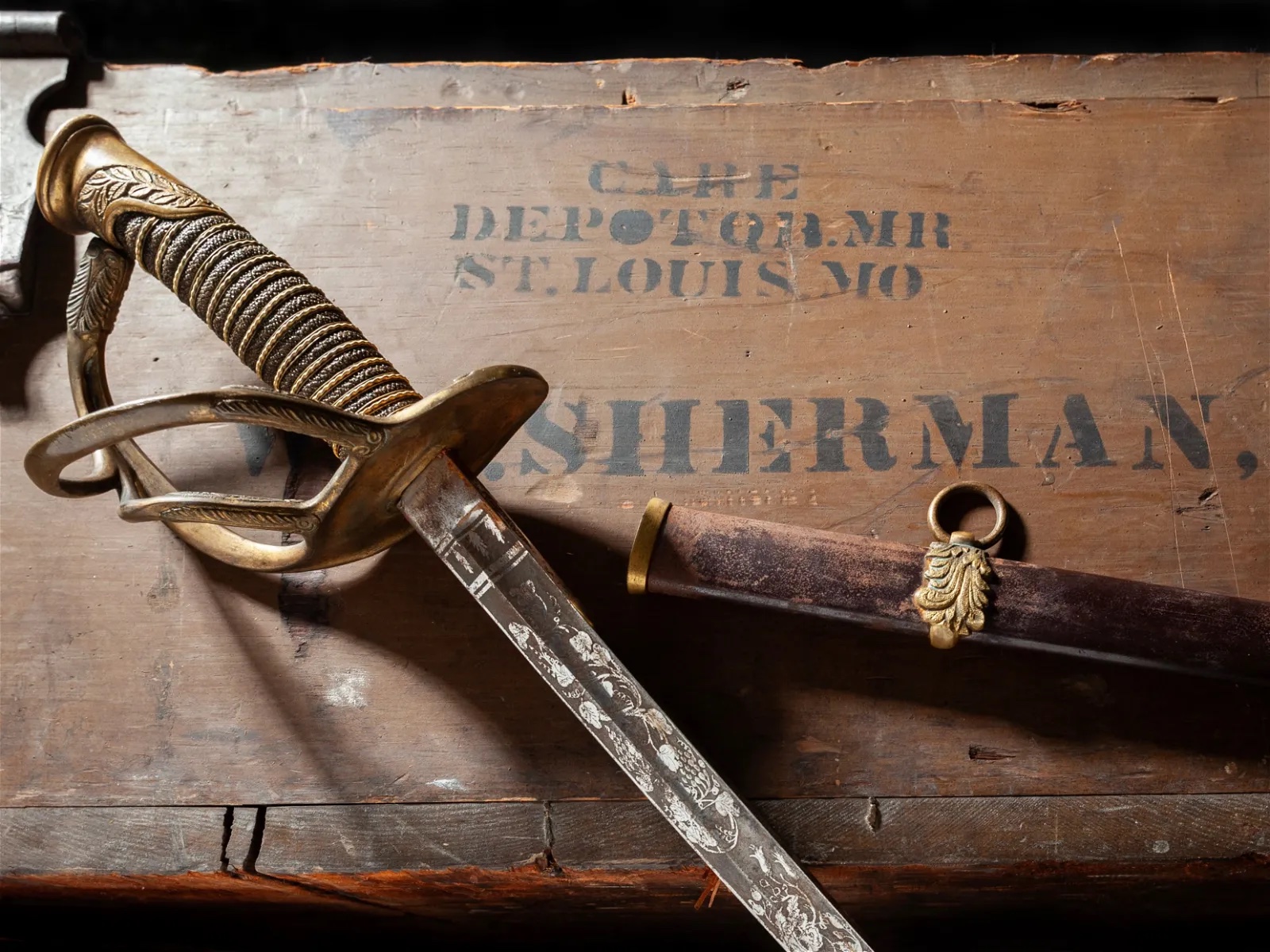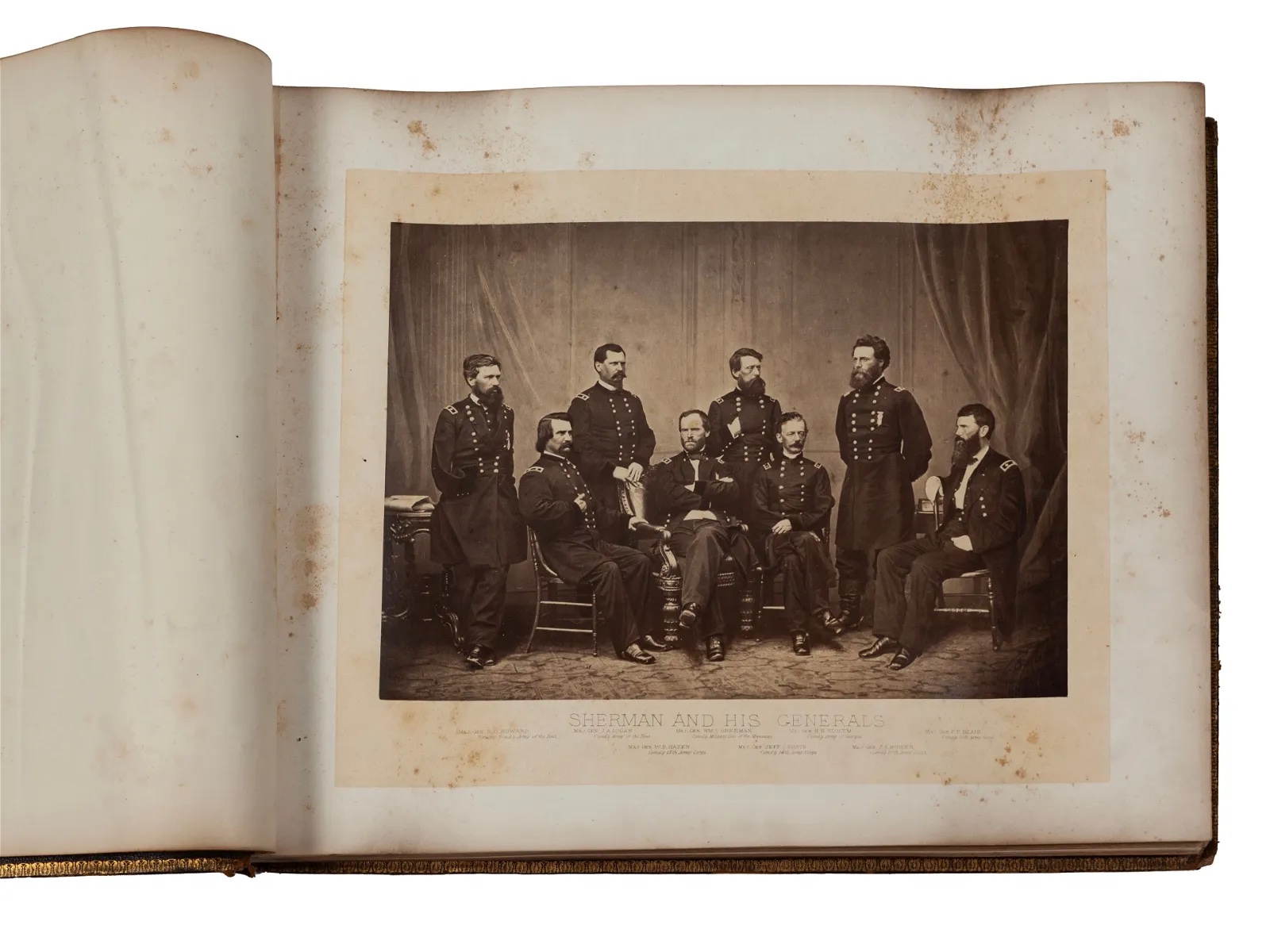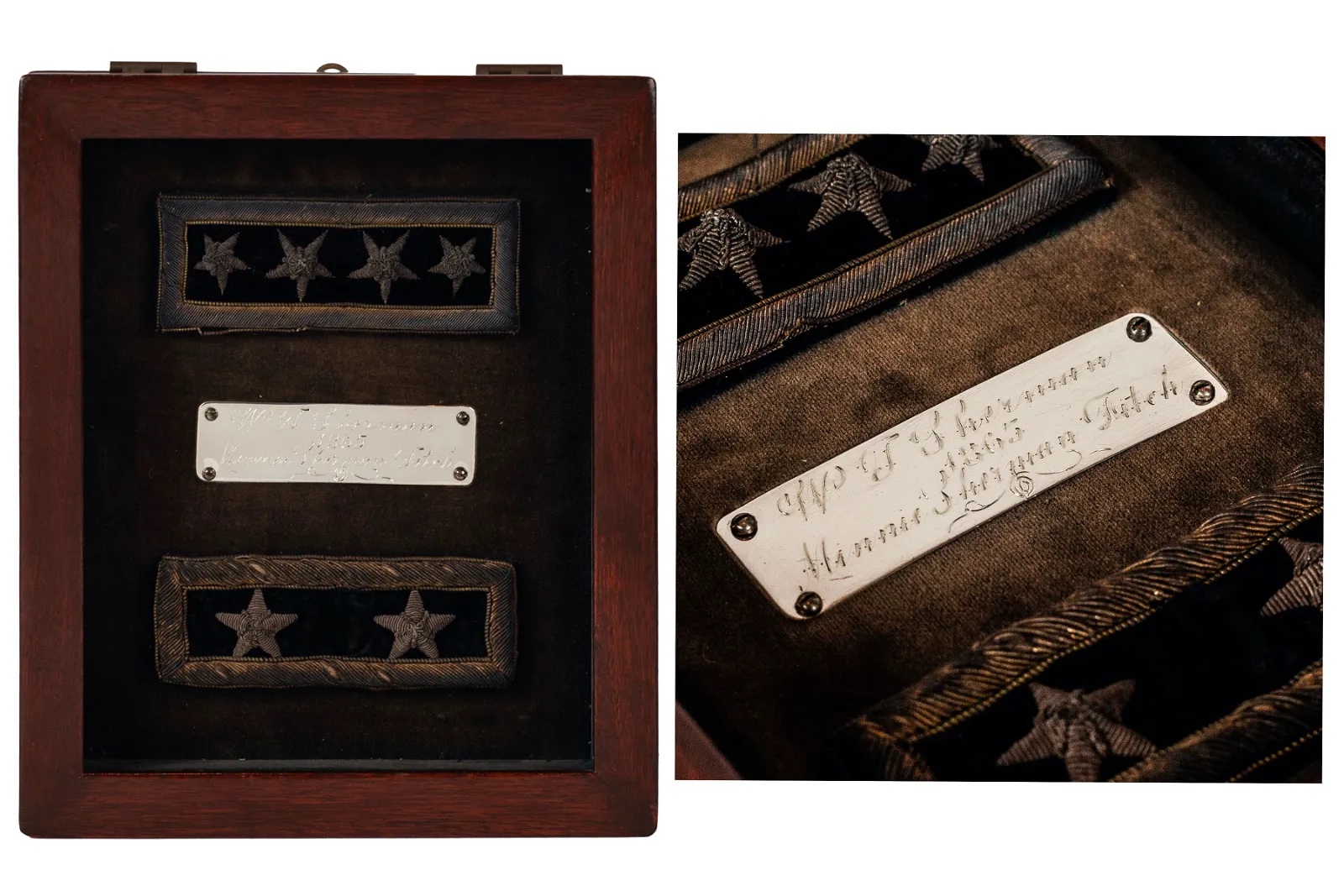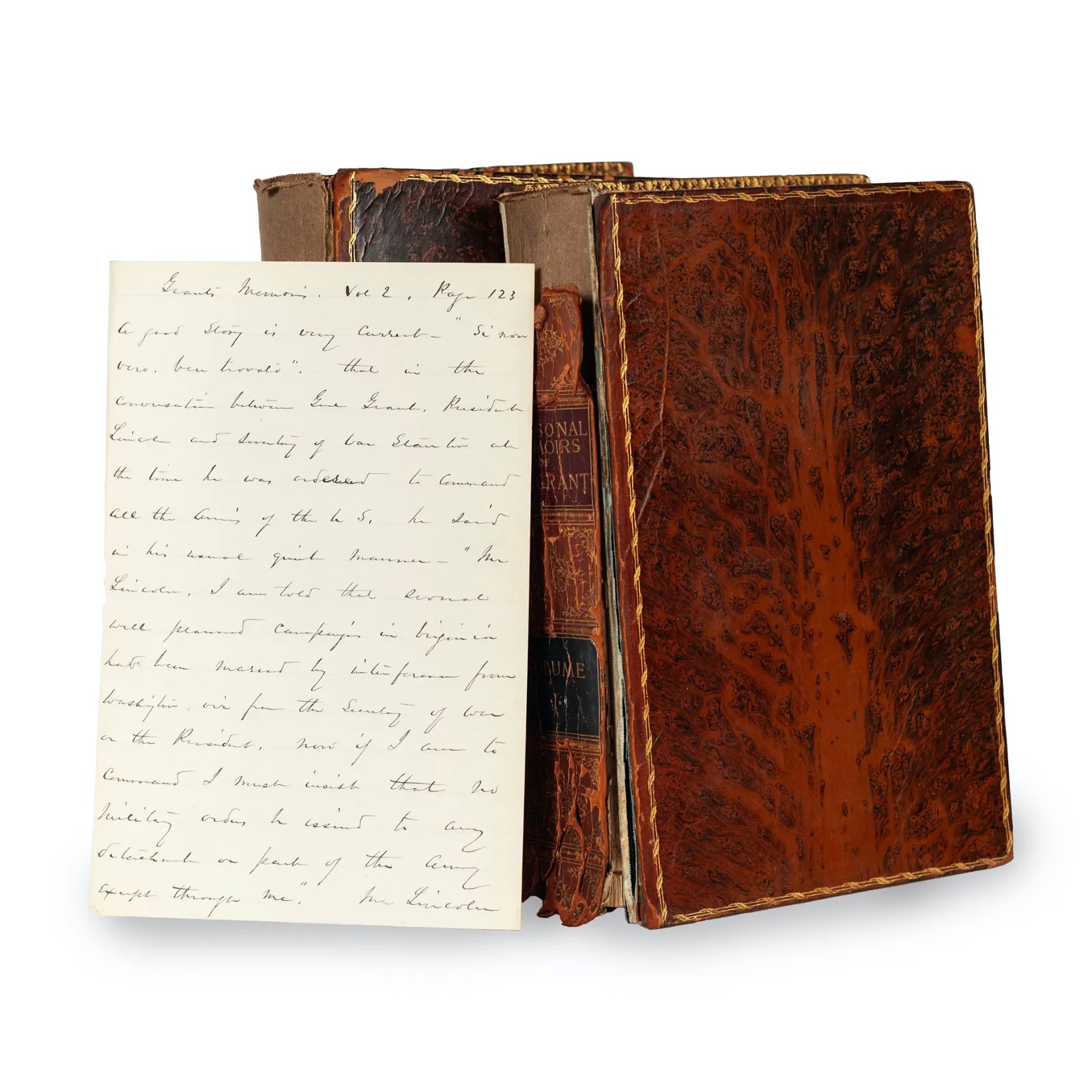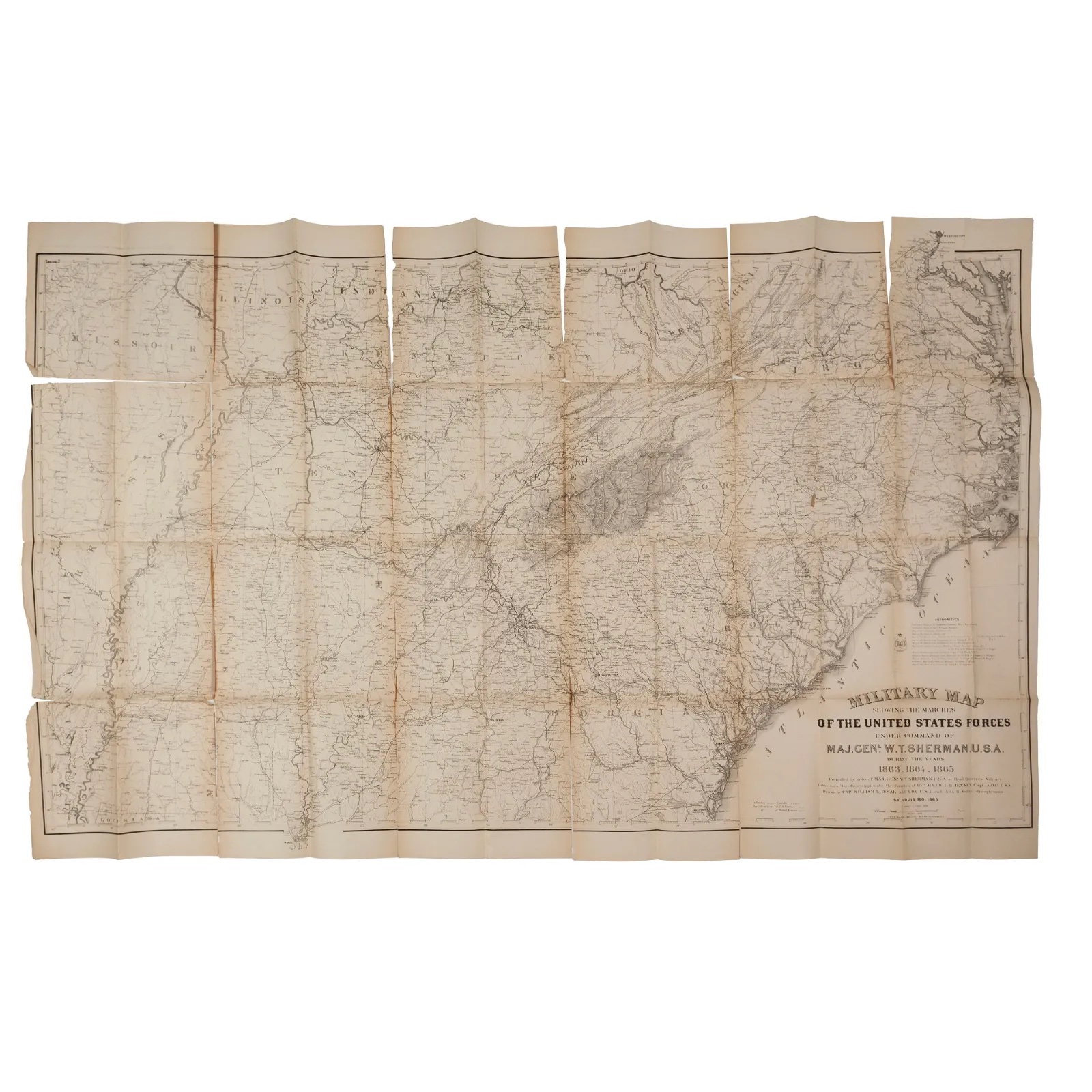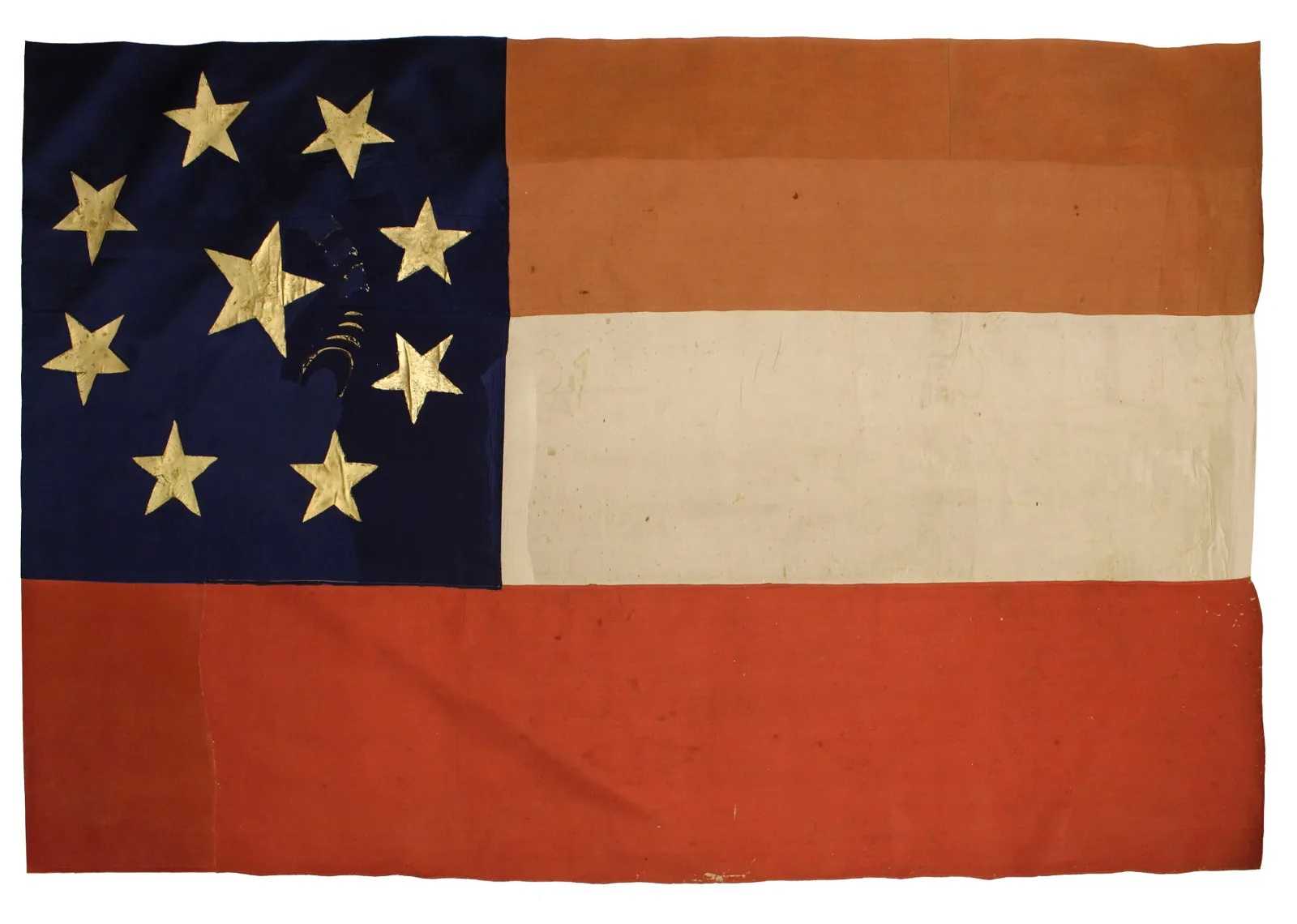DENVER, PA — Dan Morphy Auctions will bring round two of the Paul Friedrich collection of firearms and Gold Rush memorabilia to the market on Tuesday, May 7, Wednesday, May 8, Thursday, May 9, and Friday, May 10. The complete set of catalogs is now available for review and bidding at LiveAuctioneers.
Part I of Friedrich’s time capsule of historical American arms and objects was presented on October 25, 2023 and realized a hefty $3.4 million, with a Winchester ‘1 of 1,000’ 1876 lever-action rifle leading the lineup at $358,000 with buyer’s premium.
The Friedrich collection features some of the most important Colts and Winchesters ever to reach the marketplace. This pair of pre-WWII exhibition-engraved and gold-inlaid Colt Officers Model Double-Action Revolvers come with a deluxe French-style case. The lot is accompanied by Colt factory letters, copies of descriptions from their sale at Little John’s auction house, plus other documentation, with an estimate of $75,000-$150,000.
Another top lot is a .44-40-caliber smoothbore Nimschke-engraved Colt Lightning magazine rifle that was custom-made and inscribed for a member of Buffalo Bill’s Wild West Show. It was factory-shipped in 1888, as a shipment of one gun, to Schoverling, Daly & Gales in New York. Together with a Colt factory letter and other documentation, it is estimated at $75,000-$100,000.
A John Ulrich factory-engraved, nickel-plated Deluxe Winchester Model 1876 lever-action rifle was built in 1882 and chambered in .45-60 caliber. One of only 709 made with plating and one of only 127 with factory engraving, its action is stamped ‘J. ULRICH’ behind the trigger. It is estimated at $60,000-$90,000.
This pristine-condition Colt Frontier Six Shooter is accompanied by its original Colt factory-pink picture box. This gun left Colt as a .44/40 with a 4.75in barrel, blued finish, and stocks not listed. Originally shipped to C. W. Hackett Hardware Company in St. Paul, Minnesota, on December 13, 1895, it has a $60,000-$125,000 estimate.
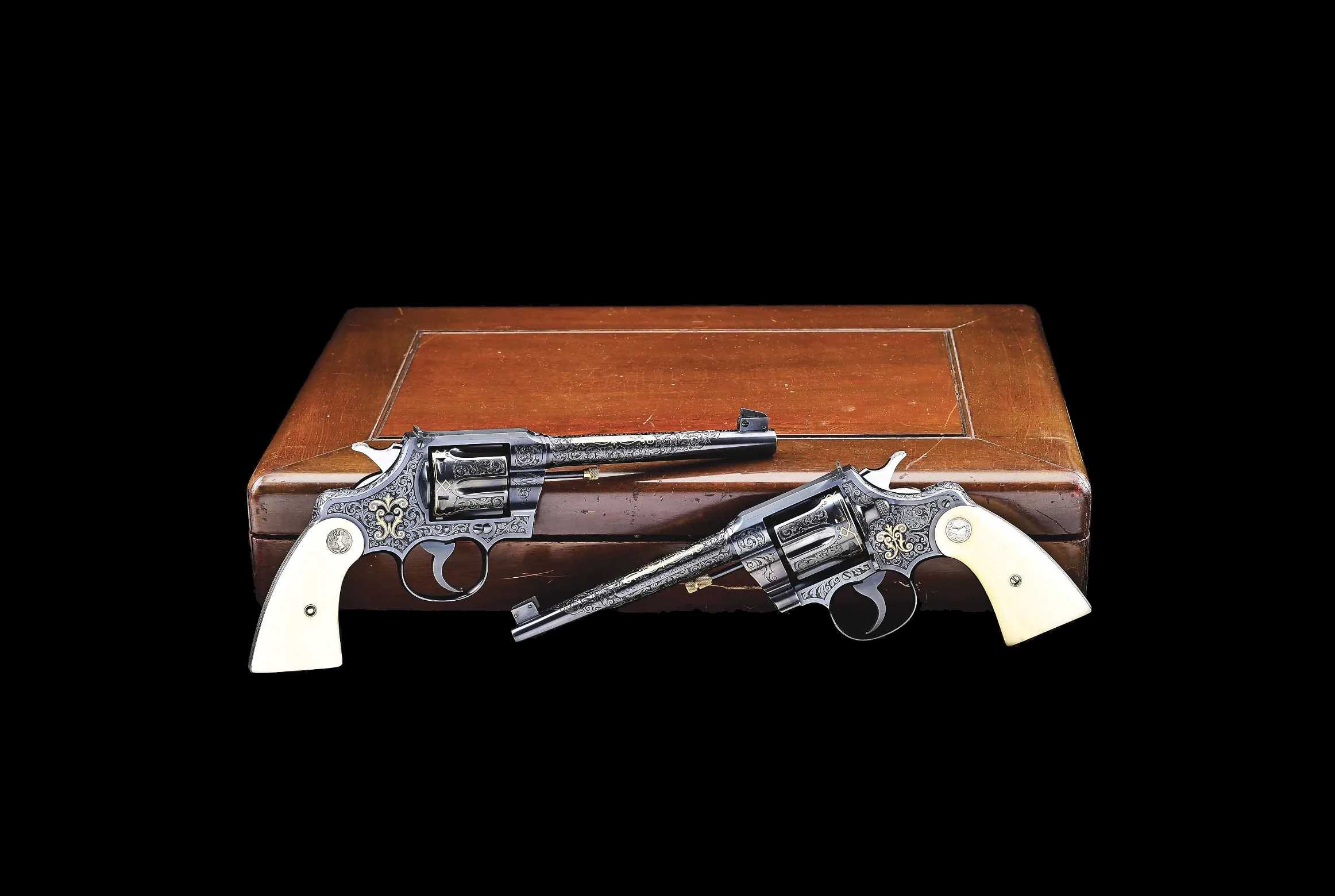
Exhibition Engraved & Gold Inlaid Colt Officers Model Double Action Revolvers, estimated at $75,000-$150,000 at Morphy.
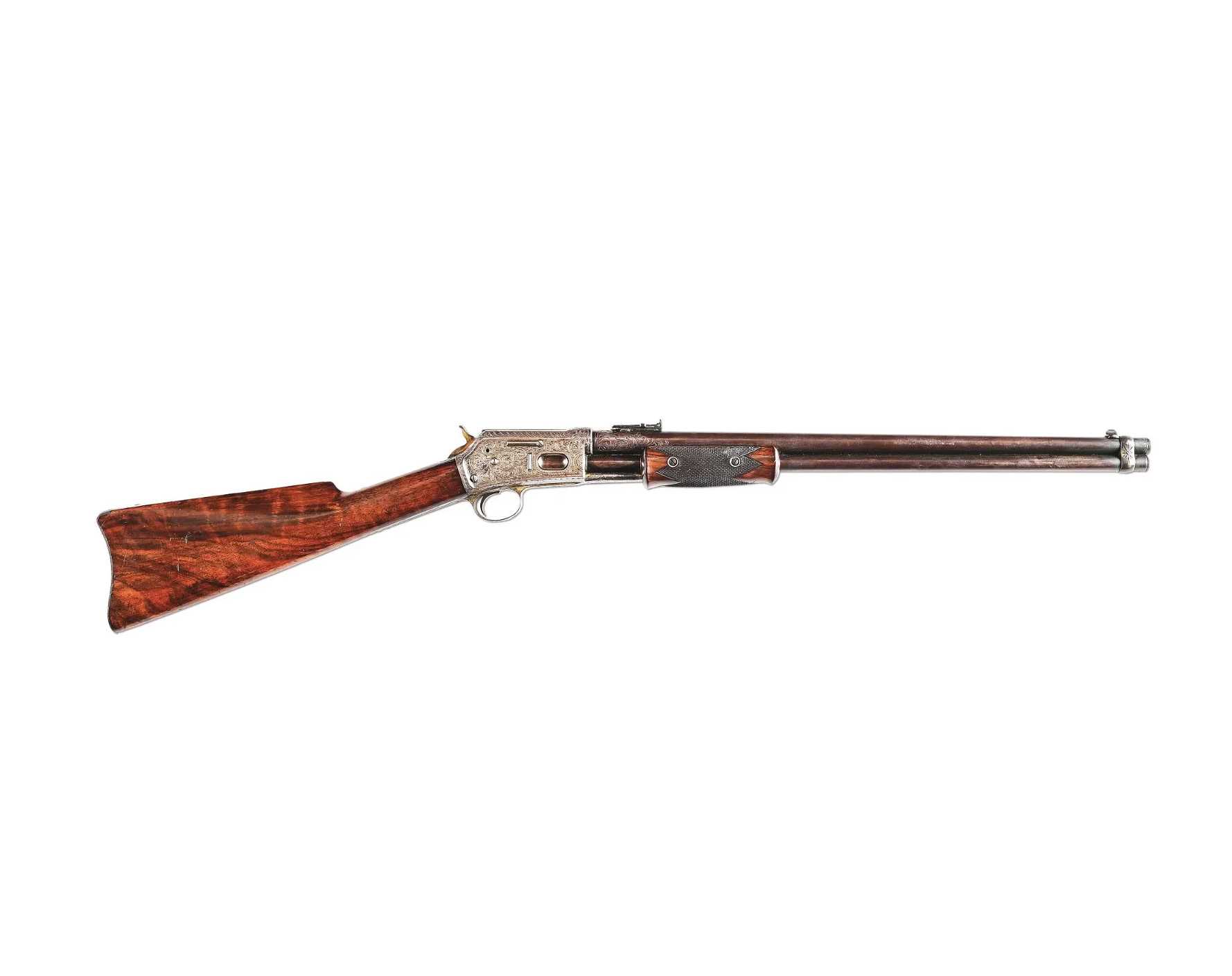
Buffalo Bill Team-Used Nimschke Engraved Colt Lightning Magazine Rifle, estimated at $75,000-$100,000 at Morphy.
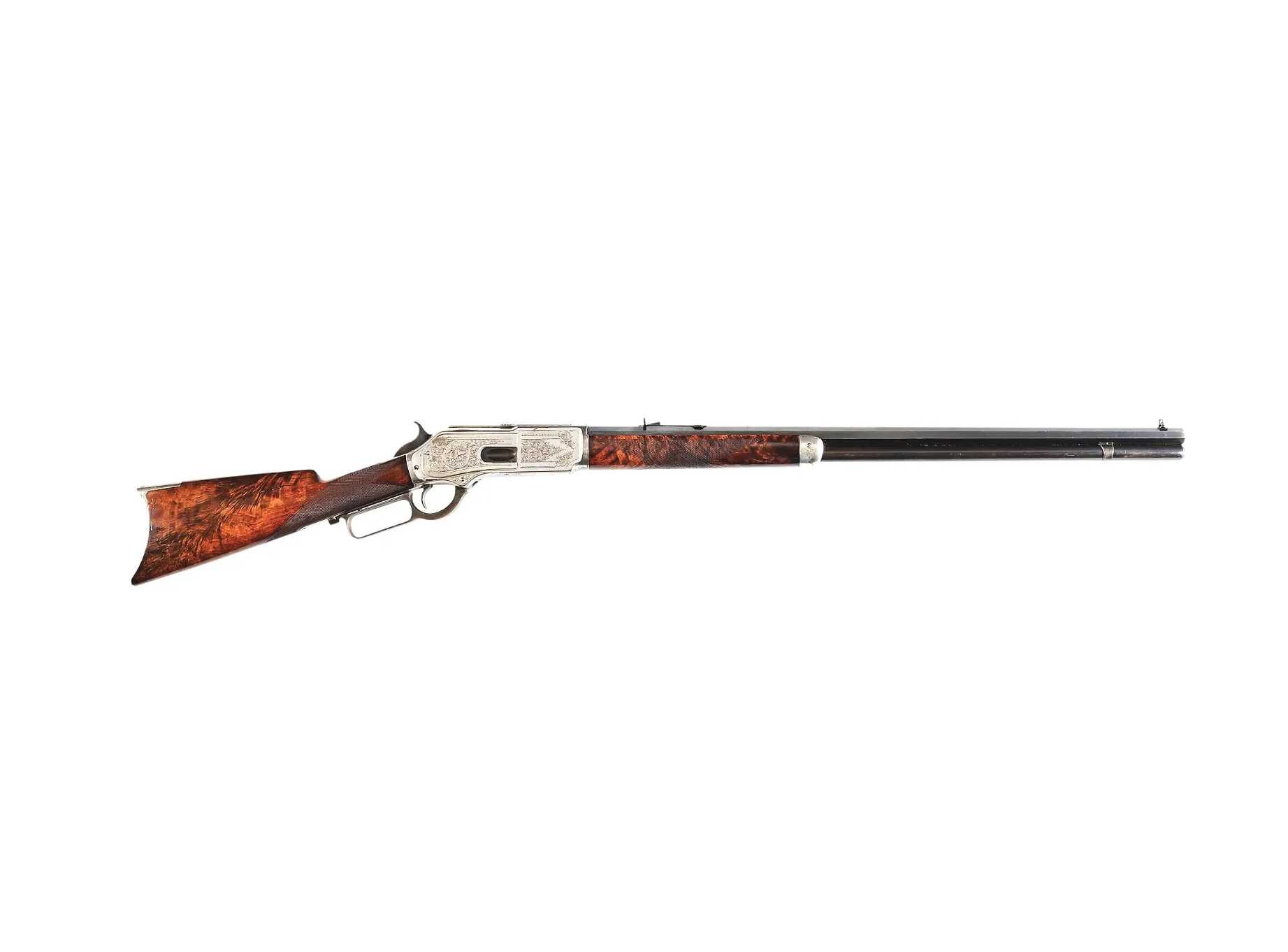
John Ulrich Factory Engraved Nickel-Plated Deluxe Winchester Model 1876 Lever Action Rifle, estimated at $60,000-$90,000 at Morphy.
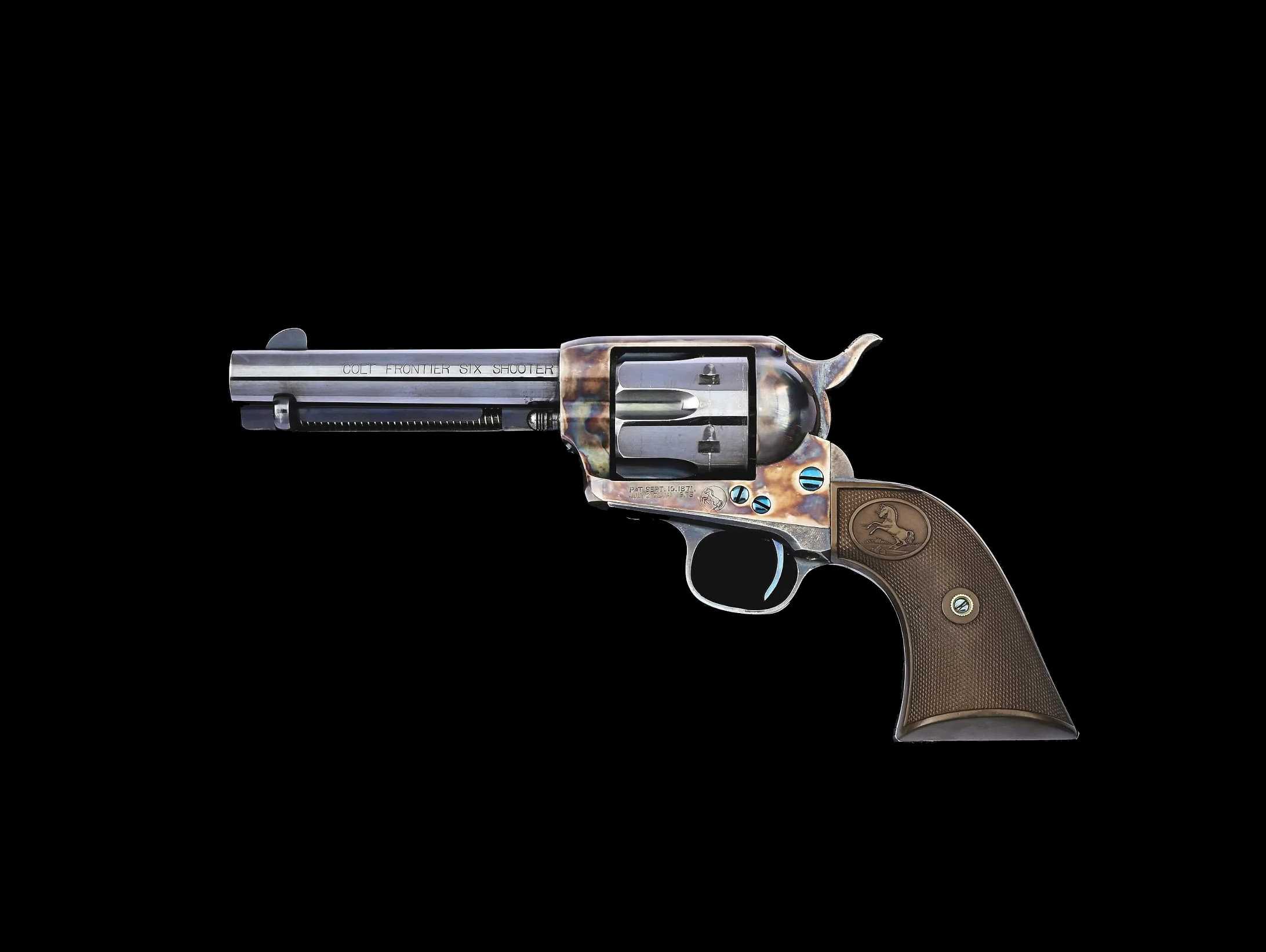
Near New Colt Frontier Six Shooter With Picture Box, estimated at $60,000-$125,000 at Morphy.


